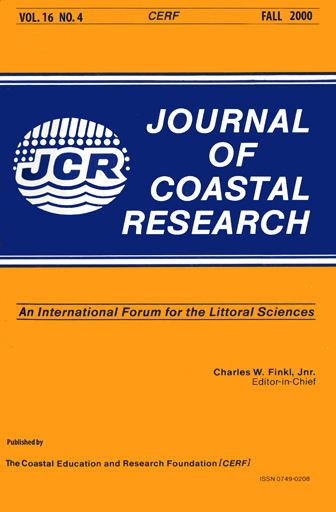Radiocarbon Dates in China's Holocene Yangtze Delta: Record of Sediment Storage and Reworking, Not Timing of Deposition
Keywords:
Alluvial deposits, climate change, coastal protection, cores, delta plain, deposition, erosion, Holocene, Pleistocene, sediment reworking, storage, subsidenceAbstract
Evaluation of conventional and AMS radiocarbon dates, obtained for 65 Holocene sediment samples in 20 cores collected in the Yangtze delta, China, indicates that only about one in 4 dates falls within an expected time range. In this Holocene deltaic system, most radiocarbon-dated samples do not become progressively younger upcore, and there is no direct relationship between age and depth . About one in 6 dates is too young, recording locally truncated stratigraphic sections. Of particular note are the nearly two-thirds of all radiocarbon dates that record ages that are much too old, by 1000 to 10,000 years (23% are of Pleistocene age). This phenomenon results from the introduction of old carbon during sediment storage and reworking along the dispersal path between headlands and the coast. Thus, rather than recording final time of Holocene deposition at deltaic core sites, dates in Yangtze delta sediment appear to indicate a time lapse that occurred during storage and transport cycles in the fluvial valley and delta plain. There is no simple, obvious or universal solution to this radiocarbon-dating problem in deltaic sequences. The problem warrants attention since reliable dating of Holocene sequences is essential for measurement of rates of sediment accumulation and delta margin subsidence relative to sea level, two of the parameters needed to help implement protection measures along the vulnerable low-lying Yangtze delta coast. At present, a multi-method dating approach (amino acid racemization, isotopic analyses, archaeological determination, and others) would constrain sediment age, and provide a more reliable measure of deposition time in such settings than by radiocarbon dating alone.


